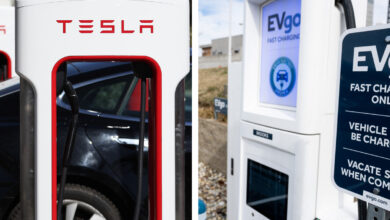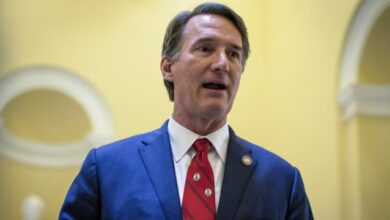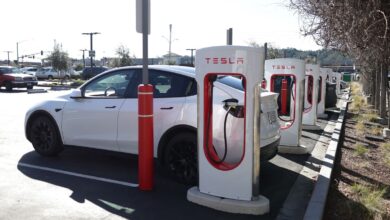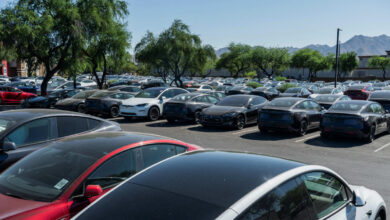Electric, hybrid vehicles making inroads in region
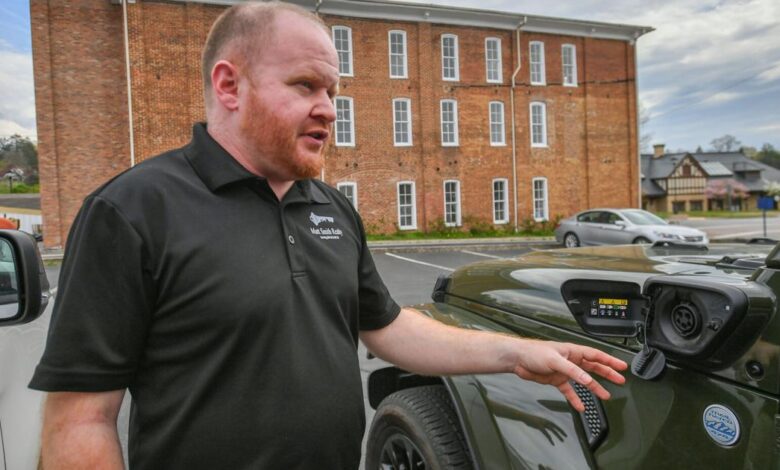
Editor’s Note: This is the first in a series examining the popularity of electric and hybrid vehicles in this region.
Anthony Farnum is often on the go, whether he’s going to show a client a house, or heading to a city council meeting.
The real estate agent and Bristol Virginia city councilman drives a Jeep Wrangler 4xe, a hybrid sport utility vehicle that he can easily switch between electric battery and gasoline power.
“I’m saving money on gas,” Farnum said. “I really hated getting gas all the time.”
Farnum is one of about 2.5 million people in the United States that drives an electric or hybrid vehicle.
People are also reading…
More than 56,000 electric vehicles are registered in the state of Virginia and about 22,000 electric vehicles are registered in Tennessee, according to the Alternative Fuels Data Center.
Farnum has owned his Jeep since December of 2022, and he’s discovered that he can save about $200 to $250 in gas every month month.
Before the plug-in Jeep, Farnum drove a standard gas-powered Jeep.
“But a long time ago, I also had a small [Toyota] Prius, so I was always interested in fuel efficiency,” Farnum said. “Then Jeep came out with the 4xe plug-in hybrid, so I thought it’s the best of both worlds.”
With the plug-in Jeep, Farnum says he typically uses gas on the highway and electric battery in town. He charges the Jeep at night, plugging into a standard outlet at home.
Farnum said it “takes a lot” of battery power to get his Jeep up to the proper speed to drive on the interstate, which he often uses when connecting between cities.
The cost to power his vehicle is about $50 a month. As a Bristol, Virginia, resident, Farnum uses BVU for electricity.
The Jeep Wrangler 4xe is good for an average of 22 miles on all-electric power before the gas engine will take over, according to the U.S. government’s official fuel economy website through the Environmental Protection Agency.
On the road, Farnum said his Jeep has an approximately 30-mile range on electric power.
Will Farnum ever go all-electric?
“I don’t know, I’m undecided. I like it has battery and gas,” he said.
Farnum said he has no fear of ever being stranded on the side of the road due to a dead battery, but that’s primarily because he also uses gas.
“People still run out of gas,” he added.
Power up
Electric and hybrid vehicle sales are increasing in Northeast Tennessee and Southwest Virginia, according to area dealers. That number includes an increase in all-electric Teslas.
Tyler Fraser, a local photographer in Bristol, drives an all-electric Tesla Model 3 Long Range. It’s his second Tesla. His previous one was a Model 3.
“I absolutely loved the performance, because of how quick it was, and sporty, but due to how much I drive for my job, I ended up going with a Long Range to get more mileage out of it,” he said.
Fraser travels across the region for photography and said he is “overall very pleased.”
His current Tesla saves him in fuel costs versus driving a truck. He also said he enjoys the auto-pilot and other technology that Tesla has. Customer service is “really great,” he added.
“It’s probably not for everybody, but I definitely love having mine,” Fraser said.
The advertised range for Fraser’s Tesla is 355 miles, but he said the actual range depends on environmental factors such as the outside temperature, driving habits and terrain. Usually, on average, Fraser said his vehicle gets about 280 miles on a charge.
“I charge overnight at my house, as well as supplemental charging at Superchargers,” Fraser said.
Tesla has a network of about 50,000 Superchargers around the world. The charging stations can add up to 200 miles of range in just 15 minutes, according to the company. There are three Superchargers in Bristol and one in Abingdon.
Electric car sales continue to increase around the world and could reach about 17 million this year, accounting for more than one in five cars sold worldwide, according to the International Energy Agency.
That’s a big jump from when William Morrison introduced the first electric car to the United States in 1890, according to the U.S. Department of Energy. Morrison, a chemist who lived in Des Moines, Iowa, created a six-passenger vehicle capable of a top speed of 14 miles per hour and was little more than an electrified wagon.
The DOE said Morrison’s creation helped spark interest in electric vehicles.
Over the next few years, electric vehicles from different automakers began popping up across the country, according to the DOE. New York City, the nation’s largest city, even had a fleet of more than 60 electric taxis.
By 1900, electric cars were at their heyday, accounting for about one third of all vehicles on the road.
It was Henry Ford’s mass-produced Model T that dealt a blow to the electric vehicle, according to the DOE. Introduced in 1908, Ford’s vehicle used gasoline and became easily accessible.
High gasoline prices in the 1960s and 1970s led another upswing in electric vehicle production and sales, but the vehicles had less power and capabilities than their gasoline counterparts, the DOE said.
The 1980s and 1990s brought back larger vehicles and fuel-efficiency was less discussed, according to the federal agency.
The 1990s, however, led to the passage of the Clean Air Act Amendment and the 1992 Energy Policy Act, which renewed interest in electric vehicles. The introduction of the Honda Insight and Toyota Prius in the late 1990s and early 2000s further expanded the industry.
Ever since the two vehicles were introduced in the U.S., sales have steadily increased. Several auto companies now manufacture hybrid and all-electric vehicles, including Tesla, which introduced its first in 2008, Ford, General Motors, Honda, Toyota and several others.
With an increase in non-all-gasoline vehicles, businesses and the government have also been working together to install electric vehicle chargers. A few have been installed in Southwest Virginia and Northeast Tennessee and others are in the works.
“I think electric vehicles will eventually grow on people,” said Merrie Thomsen, general manager at Friendship Hyundai in Bristol, Tennessee. “The more they know the more they will see the savings and benefits. I think that once the infrastructure is set up, we will see more on the road, but that will come with time.”
This year, U.S. electric vehicle sales growth slowed to 3.3% in the first quarter, far below the 47% increase that fueled record sales and a 7.6% market share last year, according to the Associated Press. Sales of new vehicles overall grew 5.1%, and the electric vehicle market share declined to 7.15%.
Hybrid sales, however, grew 45% from January through March, while plug-in hybrids, which can go a short distance on battery power before a gas-electric system kicks in, grew 53%, according to Motorintelligence.com.
In addition, industry analysts say most early technology adopters and people who want to cut emissions have already purchased electric vehicles. Automakers are now working to convince skeptical mainstream buyers to go electric, but those customers fear limited range and a lack of charging stations.
Ford, the second largest electric vehicle manufacturer, behind Tesla, expects pretax losses for its electric vehicle unit to widen from $4.7 billion last year to a range of $5 billion to $5.5 billion this year, the Associated Press reported.
Ford’s gasoline powered vehicles and hybrids are expected to make $7 billion to $7.5 billion, about even with last year.
Tesla, which delivered 386,810 vehicles worldwide from January through March, has seen slumping sales as competition increases. Last year, during the same quarter, the company sold 423,000 units.
Despite slumping sales in the first quarter, electric vehicles sales are expected to rise strongly in 2024 and undercut oil demand, according to the International Energy Agency, which recently issued a forecast.
“Intensifying market competition and improving battery technologies are expected to reduce electric vehicle prices in the coming years,” the IEA said.
In addition to affordability, the IEA said the number of EV charging points around the world is expected to reach 15 million by the end of the decade.
